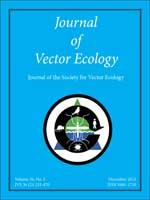Anopheles funestus is one of the major vectors of malaria in Africa. Cytogenetic studies conducted on populations from West Africa have shown variable degrees of polymorphism with a genetic structure leading to the description of two chromosomal forms called “Folonzo” and “Kiribina” that exhibit limited gene flow. Because studies on allopatric populations showed bionomical heterogeneities, the present study was undertaken during three consecutive years (2006, 2007, and 2008) in an area of sympatry in Senegal, in order to assess their bionomical characteristics and compare their epidemiologic role in malaria transmission. Overall, the two forms coexisted in the study area; the Kiribina form being more abundant and exhibiting higher biting rates. Based on an enzyme-linked immunosorbent assay, the anthropophilic rates were statistically comparable and were, respectively, 30.7% and 28.6% for Kiribina and Folonzo. Plasmodium falciparum circumsporozoite rates were also comparable and were 2.7% for Kiribina and 3.1% for Folonzo. Both forms were involved in malaria transmission; Kiribina being responsible for 68% of transmission. Thus, due to the limited gene flow between the two forms, the introduction of transgene for Plasmodium resistance in one of the two forms could be a disadvantage for the implementation of control strategies based on the use of Plasmodium-refractory genetically modified individuals. Nevertheless, it could represent an advantage limiting the insurgence of insecticide resistance gene spread between forms and should be taken into account for the implementation of control strategies.
How to translate text using browser tools
1 December 2011
Bionomics of Sympatric Chromosomal forms of Anopheles funestus (Diptera: Culicidae)
Ibrahima Dia,
N'Fale Sagnon,
Moussa Wamdaogo Guelbeogo,
Mawlouth Diallo
ACCESS THE FULL ARTICLE
It is not available for individual sale.
This article is only available to subscribers.
It is not available for individual sale.
It is not available for individual sale.

Journal of Vector Ecology
Vol. 36 • No. 2
December 2011
Vol. 36 • No. 2
December 2011
Anopheles funestus
bionomics
chromosomal forms
malaria transmission




